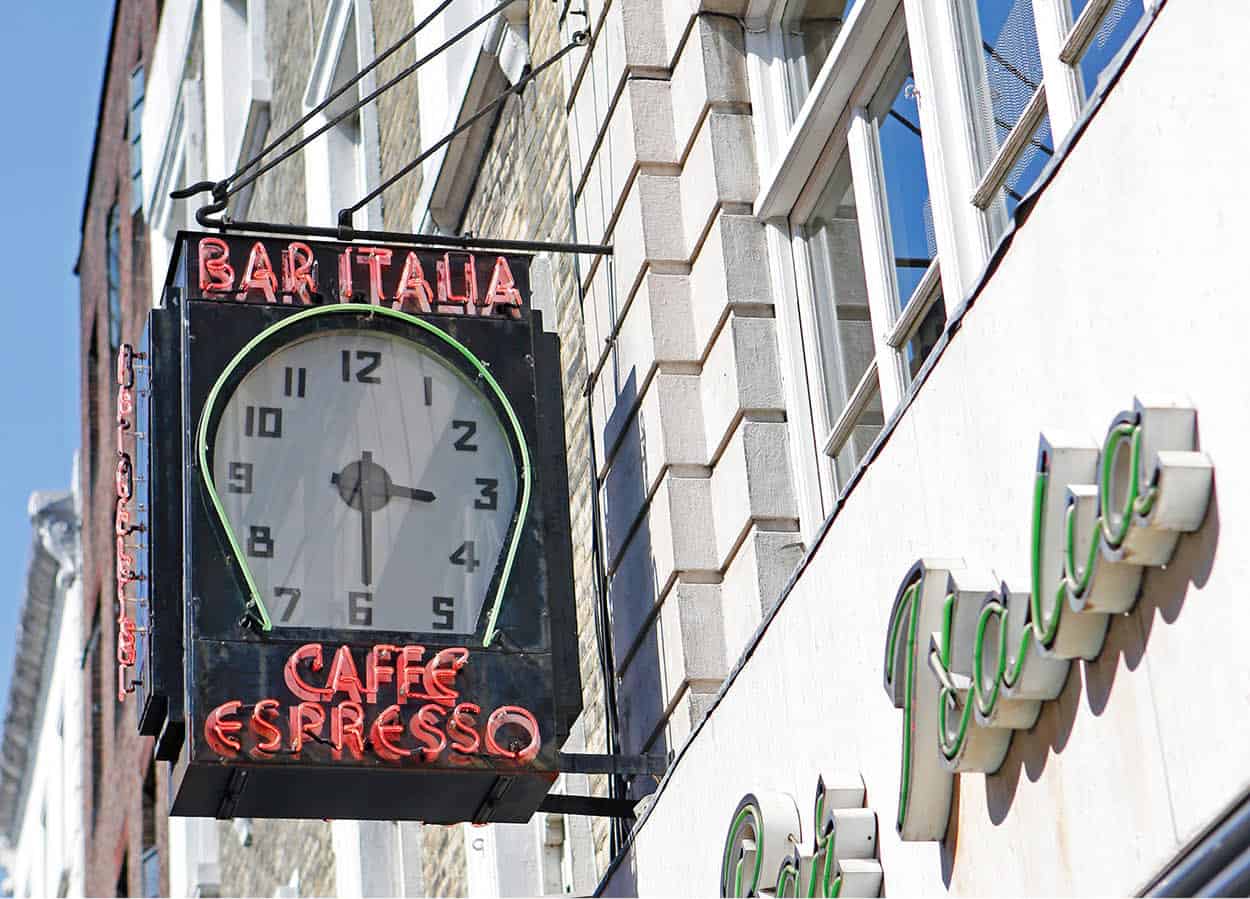
Lydia Evans/Apa Publications
Soho and Covent Garden

Lydia Evans/Apa Publications
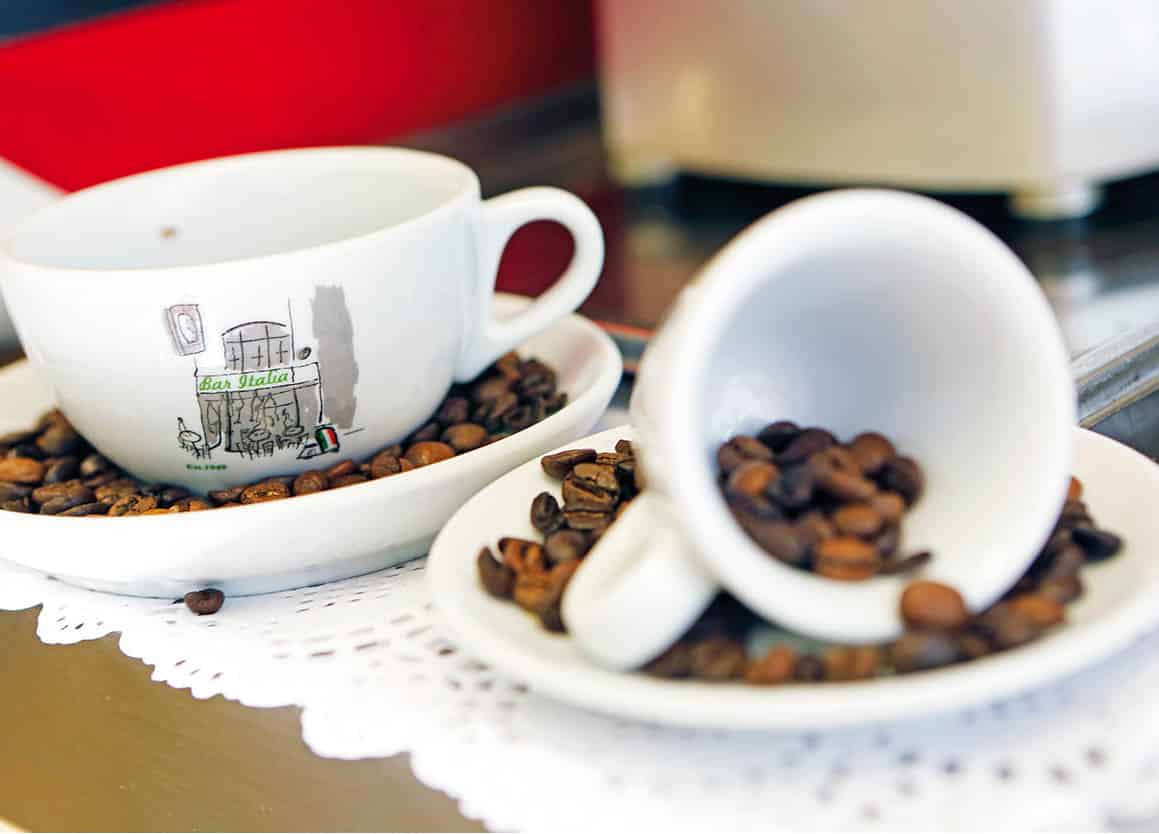
Lydia Evans/Apa Publications
Soho was traditionally London’s French quarter and the Italians were to the east in Clerkenwell, but due to road building and slum clearances at the outbreak of World War I, they started drifting west towards Soho; by 1934 it was regarded as more Italian than French. Soho is constantly updating itself, but many names from those days are still cheerfully dishing up pasta and pie with typical Latin flair to this day, including the celebrated Vasco and Piero’s Pavilion (15 Poland St; tel: 020 7437 8774; [map] B5), a packed place with friendly service and classic dishes from Umbria, popular with politicians and designers alike. And two wonderful Italian delicatessens have survived all the renovations – I. Camisa (61 Old Compton St; [map] C4) which is small and busy, bursting with great meats, cheeses and olives, perfect for an impromptu picnic in any quiet little enclave such as Soho Square a block to the north or St Anne’s churchyard on Wardour Street – and Lina Stores (18 Brewer Street; [map] C4) which hasn’t changed since the 1930s and has a wide variety of delicious imported Italian goods.
Any self-respecting tour of Soho, however, should start, and finish, at Bar Italia (22 Frith Street; tel: 020 7437 4520; [map] D4). This almost-24-hour café (it closes from 5am to 7am) might not have the best espresso, but what it does have in spades is authentic Italian atmosphere and style. It also provides excellent people-watching from its small terrace. And if you choose to go on a night that the Italian football team is playing you will find it at its most characteristically colourful and noisy, as fans cram into the small back room to watch the game on the big screen.
Next door (21) is its posher sister restaurant, Little Italy (tel: 020 7734 4737), which is a little pricey but has very good, deceptively simple Italian food, and is favoured by Brit celebs – it frequently clears the floor for dancing after dinner.
Princi (135 Wardour Street; [map] C4) is the London outpost of Milan’s artisan bakery and coffee house. And it has a similarly fashion-conscious crowd. It’s a very smart marble-countered place, where the beautiful people gather post-work or pre-club for coffee and pastries or a glass of wine and a couple of shared crostini. Polpo (41 Beak St; [map] B4) is a bustling, Venetian bacaro bar with lots of delicious tapas-sized portions of cichetti and crostini. It’s new little sister Polpetto (11 Berwick St; [map] C4), a cosy spot with an aperitivo bar and open kitchen, also serves cichetti and more substantial dishes such as lamb osso bucco and rabbit pappardelle.
The lavishly praised Bocca di Lupo (12 Archer St; tel: 020 7734 2223; [map] C3) is a buzzy, lively place where the walls are hung with paintings by the chef’s mother. And the menu has gathered together all the brilliant regional dishes – soups, pastas, risottos and roasts – of Italy into one enticing list. If you need another dessert or a late-night treat, visit its gelato shop Gelupo (7 Archer St; 020 7287 5555; [map] C3) with outstanding flavours.

Ming-Tang Evans/Apa Publications
The French House (49 Dean St; [map] D4) once had a proper pub’s name, but it became so widely known as ‘The French’ (rumours abound that it was the meeting place for the French Resistance in London during World War II) that the owners gave in and had a sign made up naming it officially. The drinking den of the poet Dylan Thomas and the painter Francis Bacon, The French still gets its fair share of bohos and old reprobates. If you yearn for a bar where the only sounds are conversation, this is the place to head – there’s no music or TV, and mobile phones!
The Coach & Horses (29 Greek St; [map] D4) is much-favoured by writers and media types. This is partly due to the legendary Jeffrey Bernard, a journalist famed for his Low Life column in Spectator magazine, whose dedication to drink often rendered him unable to work, so the words ‘Jeffrey Bernard is Unwell’ would appear in place of his column: words that inspired a book and a play about him. It 2012 it became London’s first – and probably only – vegetarian and vegan pub. A favourite is the ‘tofu-ish and chips’.
The Dog & Duck (18 Bateman St; [map] D4) is an attractive Victorian pub – there was a time you could shoot snipe in Leicester Fields, now Leicester Square, hence the name. If packed, head upstairs to the George Orwell Room – he used to celebrate the launch of his books here. It’s also served the likes of John Constable and Madonna.
If you have had your fill of pubs but not of drinking, go to Milk & Honey (61 Poland St; [map] B4) a stylish venue on three floors with great cocktails – reasonably priced for central London. It is a members-only club, but open to all earlier in the week if you make reservations (www.mlkhny.com).
Another cool bar to end your tour is Mark’s Bar, the dimly-lit basement bar beneath the acclaimed restaurant Hix Soho (66 Brewer St; tel: 020 7292 3518; [map] B3), which has comfortable Chesterfield sofas and ever-changing cocktails.
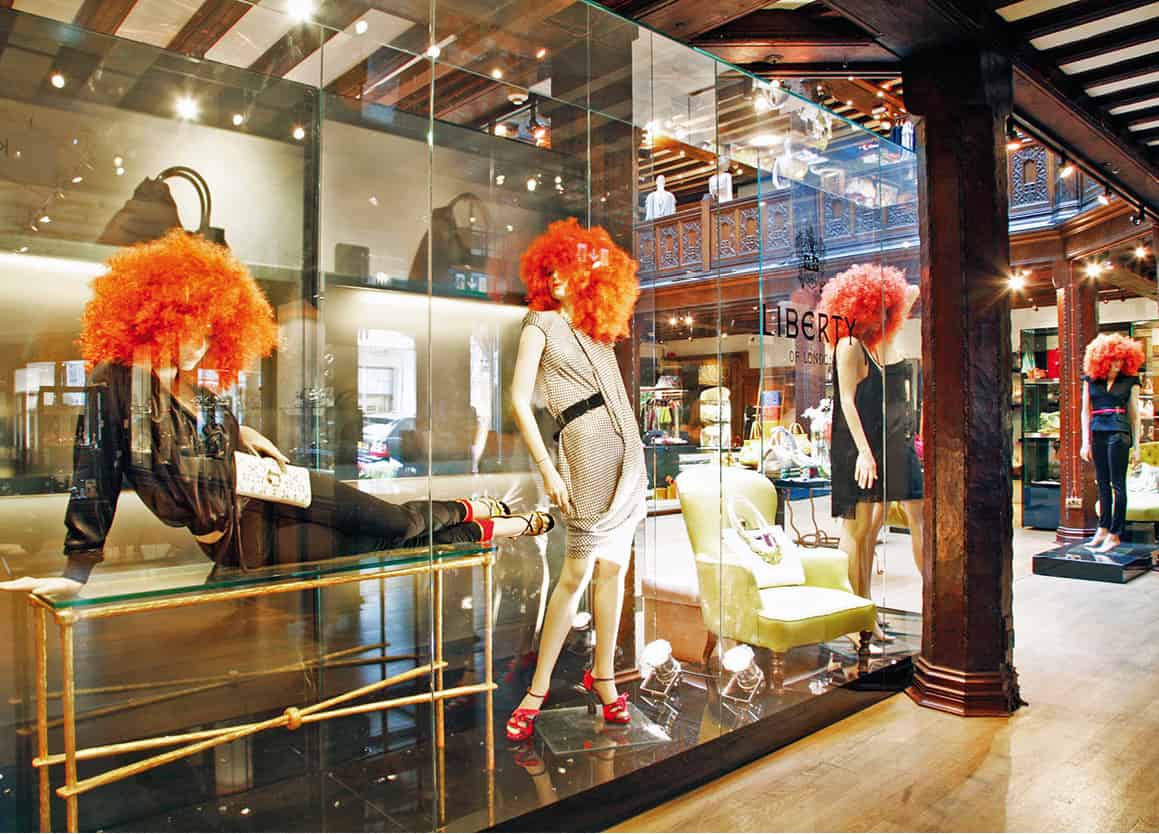
Ming-Tang Evans/Apa Publications
Time was, Carnaby Street typified ‘Swinging London’. Although those days are long gone, with many outlets for global brands, you can still find some independent gems in the neighbourhood of Newburgh Quarter. Check out: Peckham Rye (11 Newburgh St) a small store crammed with rakish 1940s-inspired menswear; Onitsuka Tiger (15 Newburgh St) – the only UK outlet for this veteran Japanese brand of sneakers; Chockywoccydoodah (30 Foubert’s Place), a chocolate ‘boutique’ with handcrafted sculptural creations and cakes; Joy Everley (7 Newburgh St) – quirky handcrafted jewellery from previous metals.
Liberty has always been strongly associated with the Arts and Crafts and Art Nouveau movements and continues to showcase new designers to this day, whether it is cutting-edge fashion by Christopher Kane, furniture by Vitra, or more routine items, such as bags, books, bikinis or bracelets. The striking exterior, with mock-Tudor beams, stretches along the whole block. The store was built in 1924, constructed from wood timbers from two ships, HMS Impregnable and HMS Hindustand. The lower ground floor has a beautifully laid-out menswear department, plus Murdock Barbers and grooming. There is also a stylish café, as strong on people-watching as it is for brunch and afternoon tea. The ground floor has beauty, jewellery – lots of lovely Art Deco pieces – accessories and the sumptuous haven of the scarf hall with traditional Liberty prints, such as the famous ostrich-feather pattern alongside pieces by up-and-coming talents. Upstairs in the wood-panelled galleried rooms you will find Liberty’s very eclectic selection of womenswear.
Opposite Liberty’s, you can take afternoon tea in the bijou Courthouse Hotel (19–21 Great Marlborough St; [map] A4), stylishly converted from the old Magistrates Court with many of the original features intact.
Liberty, 214–220 Regent St; tel: 020 7734 1234; www.liberty.co.uk; [map] A4
Eat your way round the world in and around Wardour Street
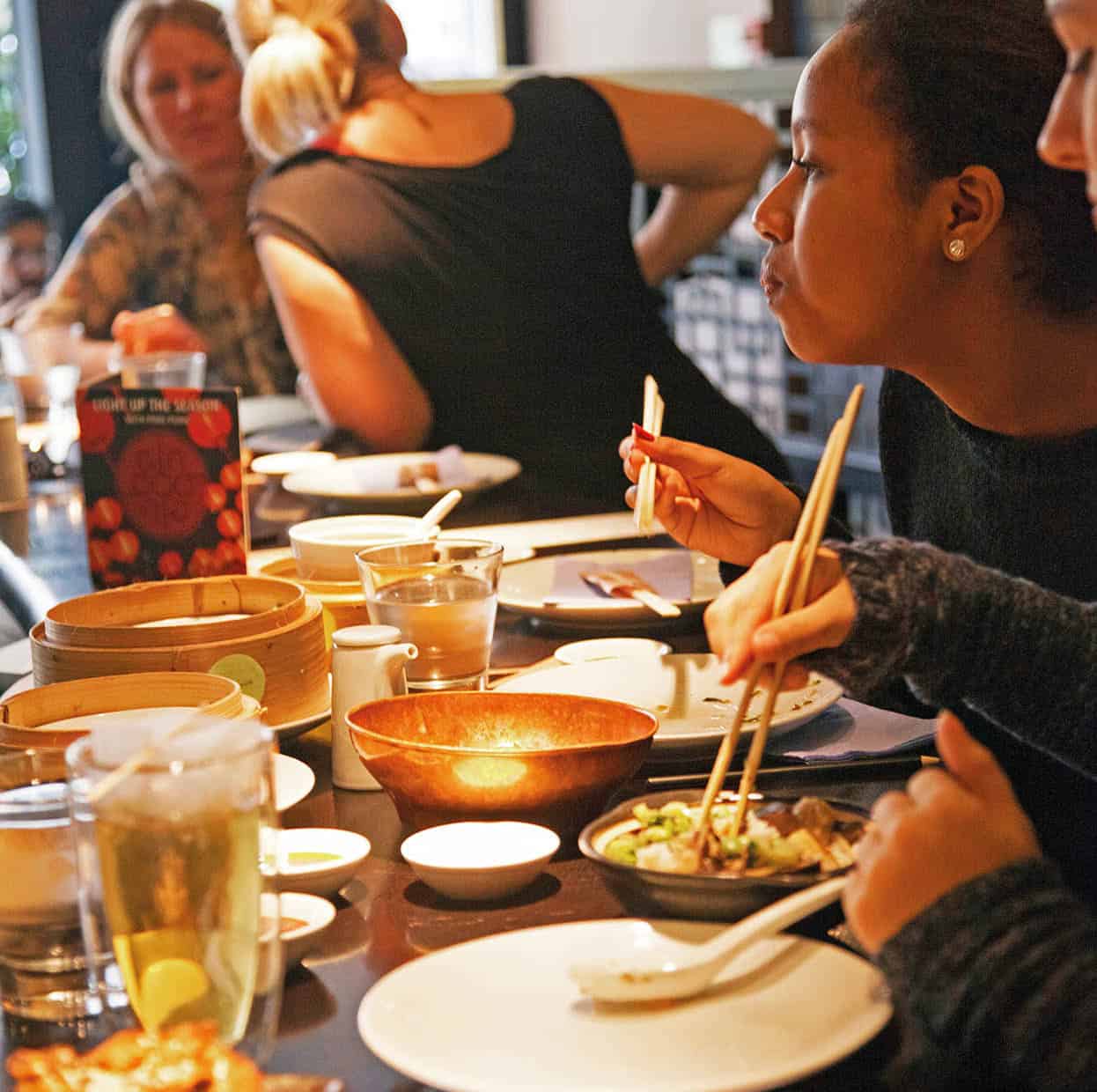
Alamy
Hummus Bros (88 Wardour St; tel: 020 7734 1311; [map] C4) really know how to make a meal out of hummus. They send it out with plenty of hot pitta bread, pile on delicious toppings such as chicken or slow-cooked beef with caramelised onions, and offer lovely Mediterranean salads and side dishes to accompany. Busaba Eathai (106–110 Wardour St; tel: 020 7255 8686; [map] C4) might have a queue but is worth a wait for the flavour-packed, inexpensive Thai specials, with communal tables. Pho (163 Wardour St; tel: 020 7434 3938; [map] C5) is an easygoing Vietnamese café known best for its traditional rice noodle soup with fresh herbs – very popular with diners on a gluten-free diet. Masala Zone (9 Marshall St; tel: 020 7287 9966; [map] B4) is a mini chain of colourful venues with original art on the walls, serving delicious, reasonably priced Indian street foods, such as pau bhaji – a pile of chilli-hot grilled vegetables in naan bread. Ping Pong (45 Great Marlborough St; tel: 020 7851 6969; pictured; [map] B4) is another chain – albeit a small and select one. They specialise in Chinese dumplings – dim sum – and give good advice to those uncertain of what to order.
Yalla Yalla (1 Greens Court; tel: 020 7287 7663; [map] C4) is a small hip café serving Beirut street food. Rasa Sayang (5 Macclesfield St; tel: 020 7734 1382; [map]D4) is a no-frills venue with authentic one-dish meals from Malaysia and Singapore, most of which are well under a tenner.
If you want a coffee after – or were only ever interested in the caffeine course – proceed directly to Fernandez & Wells (73 Beak St; [map] B4) for what is widely said to be the best coffee in London, served from a stripped-down wooden counter. Flat White (17 Berwick St; [map] C4) is another good spot for coffee that makes it the way the Antipodeans like it.
See how British design guru Sir Paul Smith has turned Floral Street into menswear central
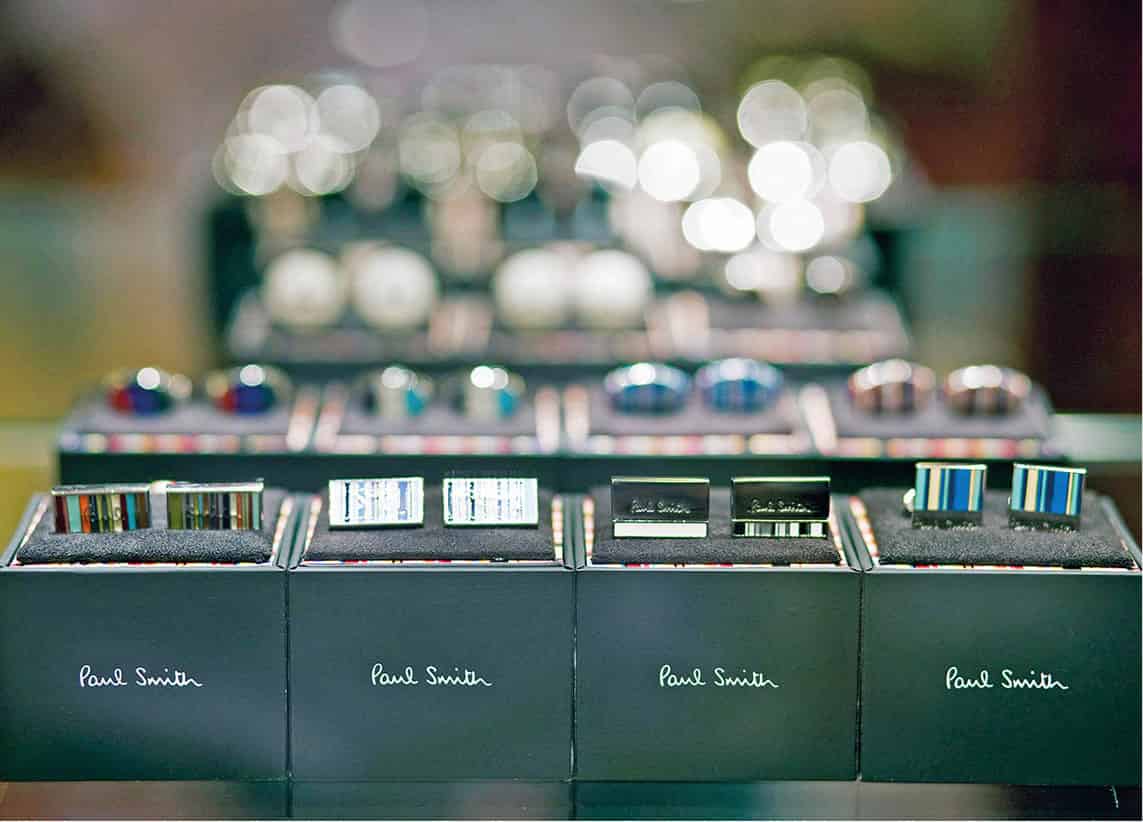
Getty Images
When Paul Smith bought his first shop – a dilapidated former bakery – on Floral Street in 1975, the entire area was a wasteland. The fruit and vegetable market had been closed down and its transformation into the Piazza shopping centre and tourist attraction wasn’t completed until 1980. So when the first London Paul Smith store opened fashion hounds had to make a pilgrimage into Covent Garden for his ‘classic with a twist’ take on British menswear and eclectic collection of other objects and curiosities for sale. The original shop has expanded, and where Sir Paul (he was knighted in 2000) led, others have followed, making Floral Street an ideal location to browse menswear outfitters.
The Paul Smith emporium (40–44 Floral St) is four connected shops you can wander around, with men’s and women’s collections of dapper, essentially English, but not at all stuffy clothing, plus lots of accessories and trinkets in his signature stripes. One of the rising names in British menswear, Nigel Hall (18) is known for his sharply cut casual and smart-casual coats, suites and shirts. French designer Agnès B (35) has her understated, beautifully cut men’s suits and leisure wear in the basement and on the ground floors, and Ted Baker (9–10) has good mid-price, good-quality, high-street fashion. A new kid on the block is Orlebar Brown (11), with men’s resortwear and swimwear. Running parallel to Floral Street, Long Acre is home to Jack Wills (34), which is all about the British take on preppy – jersey tops and rugby shirts are a speciality.
Don’t forget to look up when in Floral Street or you’ll miss the ‘Bridge of Aspiration’, the ethereal glass and aluminium walkway that provides the dancers of the Royal Ballet School with a direct link to the Royal Opera House.
Floral Street; [map] F4
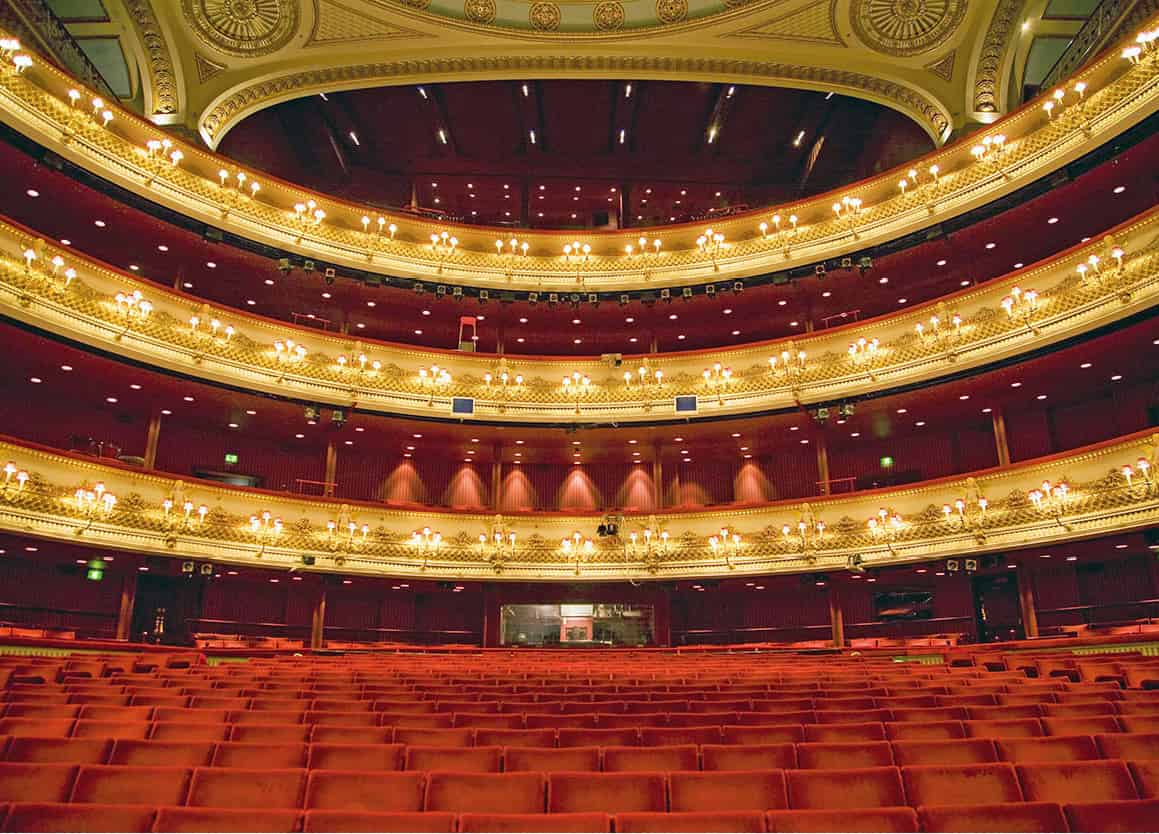
TopFoto
There’s more to this fabulous music venue than meets the eye. It’s not just a world-class opera house, it is also home to The Royal Ballet and The Linbury Studio Theatre, where experimental dance and music are staged. Built in 1732, the four-tiered main auditorium was regilded and restored to former glory in 1999 – a suitably grand setting for world-famous tenors, divas and celebrated ballet dancers. To ensure that the performances are accessible to all, a range of cheap tickets is offered from as little as £8 – making it cheaper than going to the cinema. Even if classical entertainments are not your cup of tea, the 2.5-acre Opera House merits a visit. The centrepiece of the renovation is a soaring arched-glass atrium, and the Amphitheatre Restaurant on the top floor is a spacey minimalist setting for light lunches and pre-opera meals. In warmer months grab a seat on its outdoor terrace which has fantastic views across Covent Garden Piazza.
Another way to appreciate how vast the Royal Opera House is, is to take a tour (there are various specific themes, running daily). Visitors are led backstage and often have a look inside the workshops that produce the scores of costumes required for each production. It’s a fully working theatre so each tour is unique, depending if there are rehearsals at the time. You might be lucky and see the Royal Ballet in class.
Royal Opera House, Bow Street; tel: 020 7304 4000; www.roh.org.uk; [map] G4
Sample dim sum, dumplings and duck in London’s small but perfectly formed Chinatown
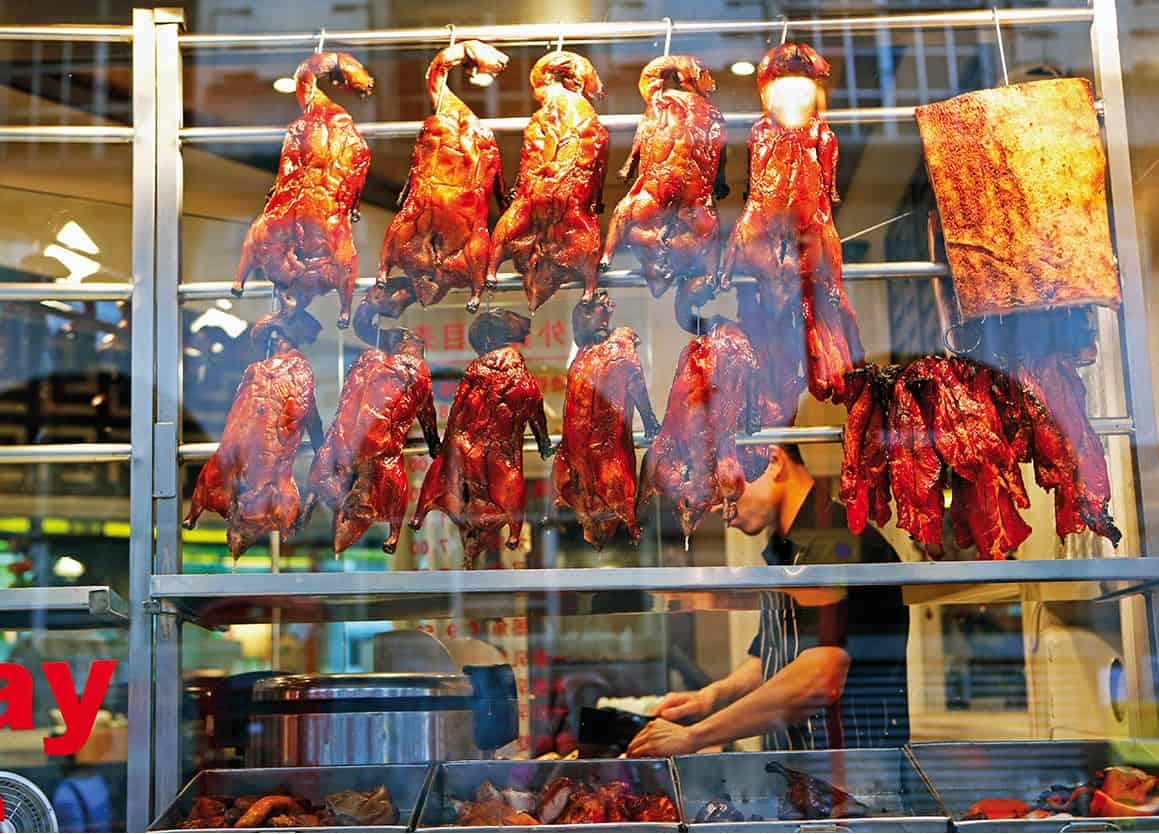
Lydia Evans/Apa Publications
London’s Chinatown may be small but what it lacks in size it makes up in colour and character. Also, it is on the doorstep of London’s theatreland which, with its swiftly served, inexpensive food available all day and on into the small hours, makes it very convenient as part of a night out in the West End. In recent years some exciting restaurants have moved in to shake up the scene, and create a gastro buzz. The most notable are:
Haozhan (8 Gerrard St; tel: 020 7434 3838; [map] D4) has food from all over China as well as delightful European-influenced oddities such as Marmite prawns and coffee pork ribs. Plum Valley (20 Gerrard St; tel: 020 7494 4366; [map] D3) has excellent and adventurous dim sum at lunchtime, and a range of rice dishes cooked in a clay pot as an evening meal for two. Leong’s Legends (4 Macclesfield St; tel: 020 7287 0288; [map] D4) is highly praised for its excellent spicy and garlicky Taiwanese food, though the service can be brusque. The atmospheric Baozi Inn (25 Newport Court; tel: 020 287 6877; [map] E3) is named after the savoury stuffed bun that is the ubiquitous snack of northern China; their version is top-notch, as is the rest of the Chengdu street food. Little Lamb (72 Shaftesbury Ave; tel: 020 7287 8078; [map] D3), an outpost of a mainland China chain, serves the best Mongolian hot pot. The title for London’s best Chinese restaurant, however, most frequently goes to Hakkasan (8 Hanway Place; tel: 020 7907 1888, [map] C5), a sleek, sexy, very ‘in’ basement restaurant.
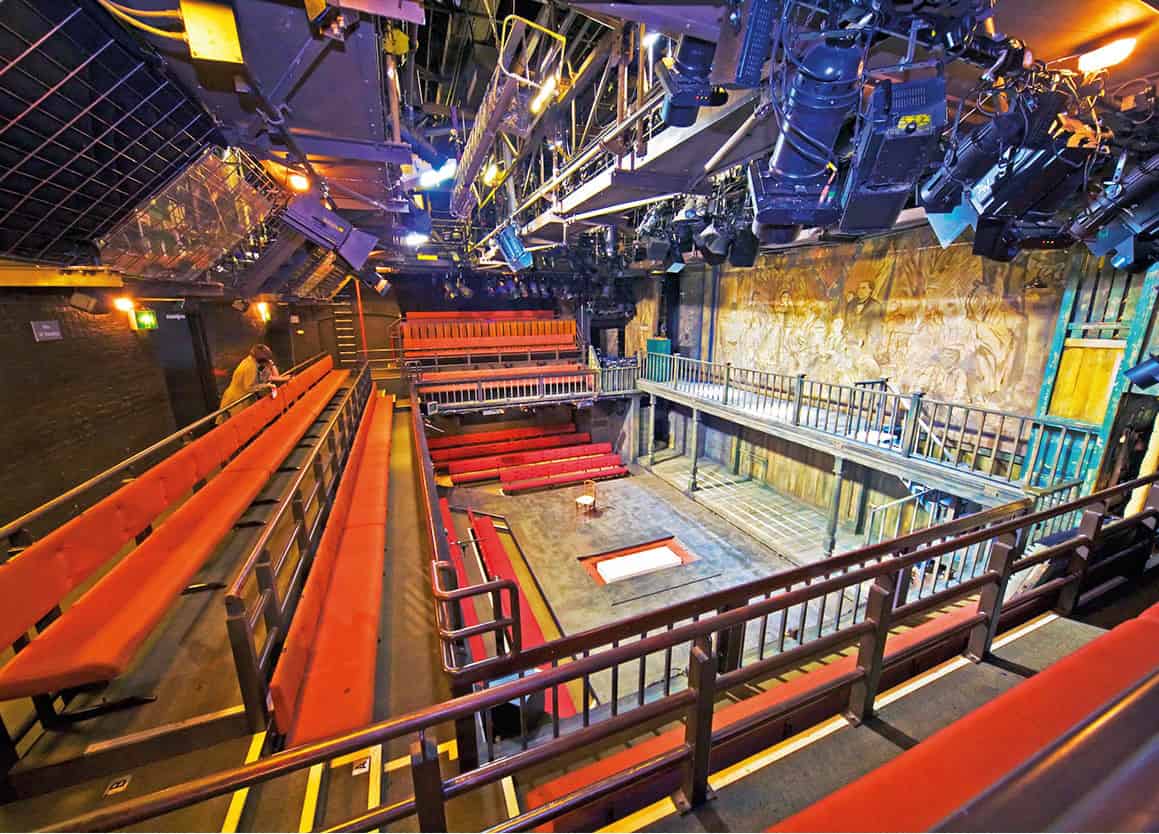
Getty Images
You can’t judge a book by its cover or judge a play by its theatre. And yet, chances are if you pick a play put on by the Donmar Warehouse, you’ll probably have picked a winner. It is only small – it seats 251 – but it is the most influential theatre in London, having staged productions that have gone on to receive 45 Olivier Awards (British theatre awards) and 20 Tony Awards (for Broadway productions) between them. Founded in the 1960s, down a cobbled street in a warehouse once used for ripening bananas, the Donmar housed the Royal Shakespeare Company in the 1970s, and all Britain’s most innovative touring companies in the 1980s. Then in 1992 Sam Mendes took over as artistic director and began season after season of attention-getting theatre, much of which went on to transfer to the West End and Broadway. In 2002 Mendes left to become the renowned film director of American Beauty, Revolutionary Road and, later, James Bond’s Spectre and Michael Grandage took over. Amazingly, the Donmar’s record for churning out award-winning productions – which have included Frost/Nixon, Jude Law’s Hamlet, Parade and Piaf – has not faltered. Tickets are hard to come by, but worth planning ahead for. It is a subsidised theatre and they release a limited number of £10 tickets for Monday nights. It’s not the most comfortable – the seats are upholstered benches – but its rough edges and limited size add to the intensity.
Donmar Warehouse, 41 Earlham St; tel: 0844 871 7624; www.donmarwarehouse.com; [map] F4
Pick of the Fringe
The Donmar Warehouse, the Royal Court (www.royalcourttheatre.com), the Young Vic (for more information, click here), the Almeida (for more information, click here) and the Tricycle in Kilburn (www.tricycle.co.uk) are the main outlets for new writing, which between them have pioneered many of London’s most exciting recent productions. Lively pub theatres include the King’s Head in Islington (for more information, click here), the Gate in Notting Hill (www.gatetheatre.co.uk) and the Bush Theatre in Shepherd’s Bush (www.bushtheatre.co.uk).
Enjoy the cultural riches and open-air entertainments of Somerset House
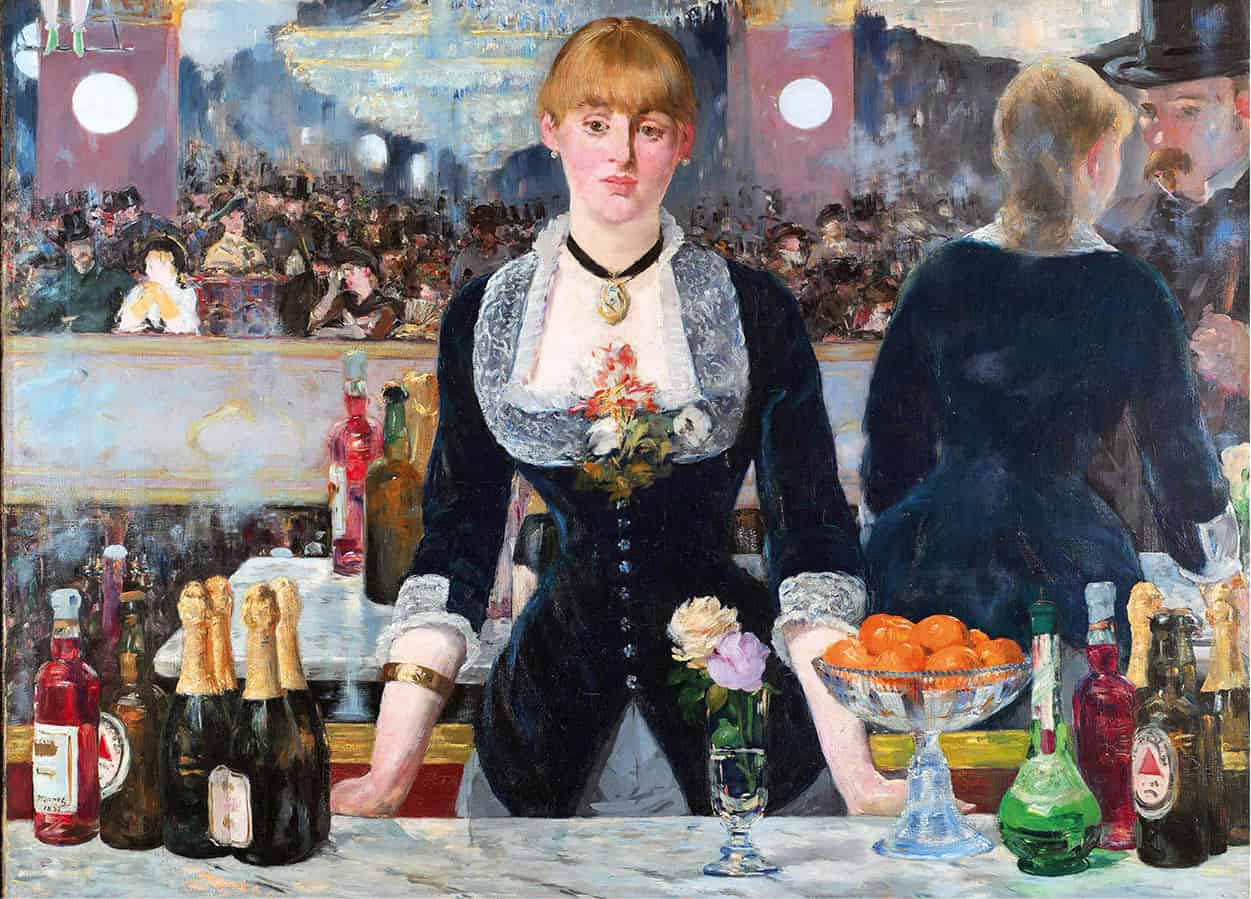
Public domain
Thanks to an ambitious refurbishment that began in 1997, Somerset House remains one of England’s finest 18th-century buildings with its courtly square, 55 fountains, beautiful old gaslights and spacious terrace giving out on to the Thames. Former headquarters of the Inland Revenue, Somerset House now encompasses a university, a fine art museum, several restaurants and cafés, and an educational centre running workshops for adults and activities for children. Plus there’s an exciting programme of open-air films and concerts in summer (June and July), and an ice rink in winter (November to January). Perhaps the best way to start to explore it is with a free tour. There are two types: the Old Palaces tour (Tue 12.45 & 2.15pm) and Historical Highlights (Thur 1.15pm & 2.45pm, Sat hourly 12.15pm–3.15pm).
The Courtauld Gallery in the North Building houses one of the world’s finest private collections of European art from the Renaissance to the 20th century, best known for its superb collection of Impressionist and Post-Impressionist paintings including many famous ones by Monet, Manet, Van Gogh, Gauguin, Degas and Cézanne. And there are a handful of more modern works by Modigliani, Matisse and Kandinsky.
There are plenty of eating options: Spring, the new 100-seater venue from Skye Gyngell, presents seasonal contemporary dishes in a bright setting; Fernandez & Wells for late breakfast and tapas in the East Wing; Tom’s Deli is the latest venture from Tom Aikens with fresh British meats and comfort food classics; The Courtauld Café is for summer months, with tables spilling out onto the outdoor terrace – perfect for an afternoon coffee and watch the world go by.
Somerset House, Strand; tel: 020 7845 4600; www.somersethouse.org.uk; [map] H3
Dine with the establishment in the renowned traditional restaurants of Covent Garden
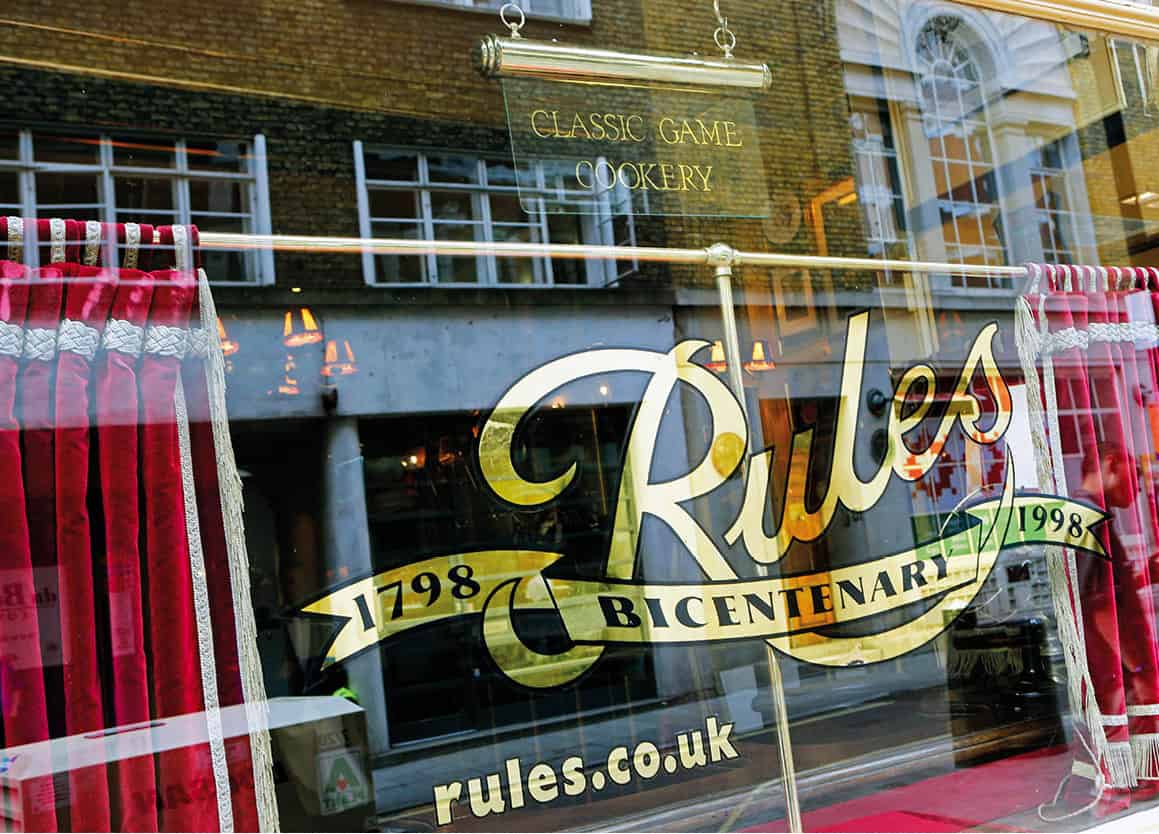
Lydia Evans/Apa Publications
Thanks to its central location, Covent Garden has been London’s first port of call for gourmands for three centuries. Between them, the following establishments have hosted most of the crowned heads of Europe and the most celebrated people of their day. For today’s visitors, it’s also a perfect neighbourhood for a pre- or post-theatre dinner.
Rules (35 Maiden Lane; tel: 020 7836 5314; [map] F3) opened in 1798 and claims to be London’s oldest restaurant. It sources all its game from its own estate. While highly traditional, Rules has avoided becoming a museum piece and the dining room is beautifully atmospheric.
Simpson’s-in-the-Strand (100 The Strand; tel: 020 7836 9112; [map] G3) is as much an institution as it is a restaurant. The ‘bill of fare’ includes roast sirloin of beef that comes on a trolley under a huge silver dome and is carved just for you by an attentive waiter. The Savoy Grill (The Savoy Hotel, The Strand, [map] G3) was the place the establishment lunched. Churchill sat at table 4 every day; other fans include Frank Sinatra and Oscar Wilde. The hotel reopened in 2010 after a £220 million refurbishment and was restored to its 1920s Art Deco glory. The restaurant has likewise retained its excellence, with the likes of charcoal-grilled Chateaubriand.
The Ivy (1 West St; tel: 020 7836 4751; [map] E4) is theatreland’s favourite dining establishment and a real celeb-magnet. The classics – Caesar salad, steak tartare and fish cakes – have near legendary status, but you have to book as far as a month in advance. Good news when the Ivy Market Grill (1 Henrietta St; tel: 020 3310 0200; [map] F3) opened then, which means visitors have more chance to taste similar dishes, albeit in a less formal setting.
For good quality seafood, J. Sheekey (28 St Martin’s Court; tel: 020 7240 2565; [map] E3) is also a celeb haunt but it’s likely that the chargrilled squid and Cornish fish stew will retain your attention even more.
Get to know an open secret at the Freemasons’ Hall

Alamy
Anybody who knows anything about the freemasons will know that it is a closed and very secretive society. And yet… they have left the door open to the public at their London HQ. The grand lodge was first built in 1775, as the city headquarters for what was then an occult order of men who believed that they had inherited a body of secret knowledge from before the Flood. That first building was deemed unsafe and the current hall, considered by many to be the finest Art Deco building in the country, was erected in 1932. And you are free to walk on in and get to know the freemasons of today through their library and museum – without the use of winks, nods or funny handshakes. There are free tours of this extraordinary building on the hour every hour from 11am to 4pm on weekdays. It is worth it to see the Grand Temple alone; the massive, bronze doors open slowly out to reveal an enormous jade and marble chamber that can seat 1,700 and is magnificently, and mysteriously, decorated with the symbols and figures of Masonic ritual on panels of mosaic and stained glass. Photographic ID may be required.
On the same street (and named after it), Great Queen Street (32) is a busy gastropub, offering great modern British food with a lively Cellar Bar. Another noteworthy address on the street is Stephen Jones Millinery (36) which sells beautiful and eccentric hats for fashionable events.
Freemasons’ Hall, 60 Great Queen St; tel: 020 7831 9811; www.ugle.org.uk; [map] G5
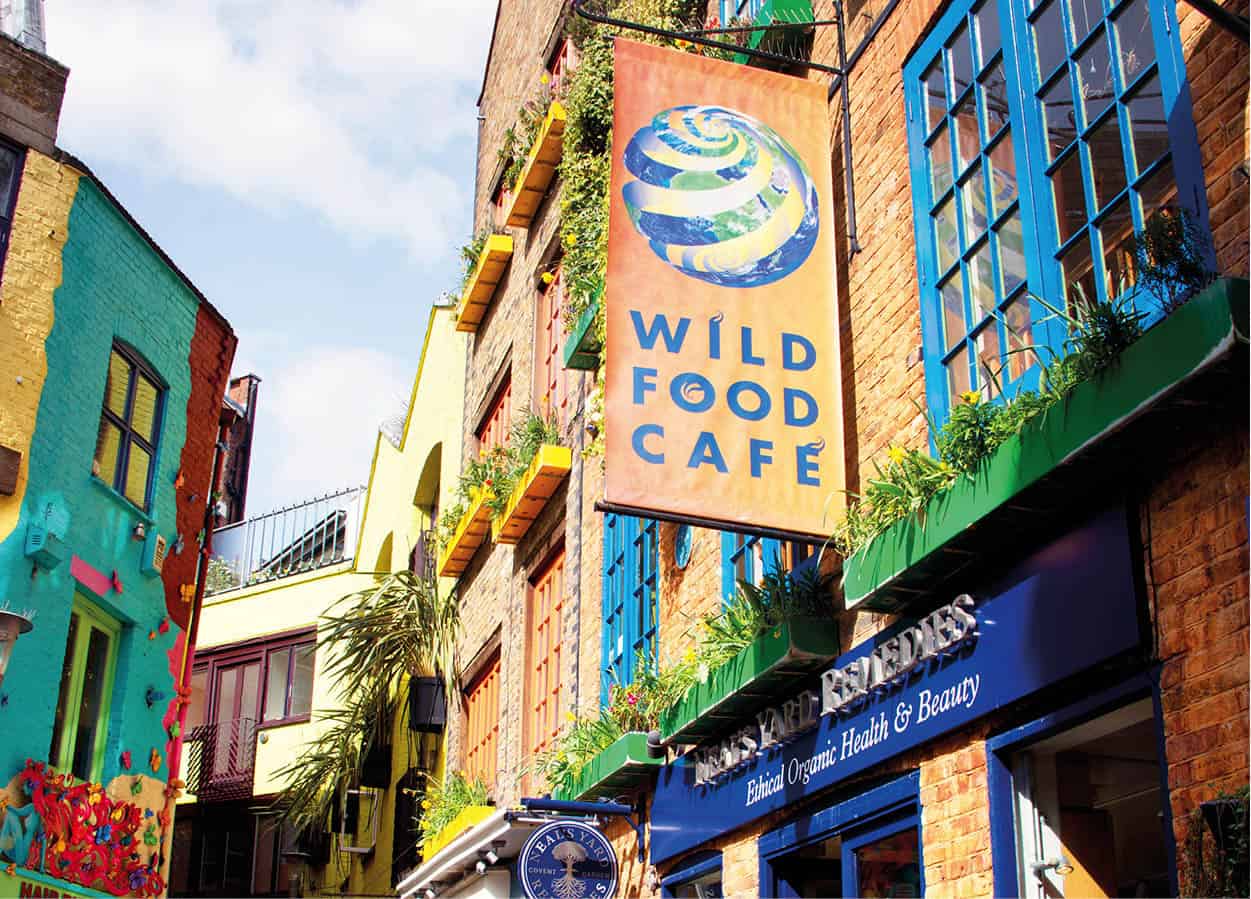
iStock
Neal’s Yard is in the Seven Dials (www.sevendials.co.uk; [map] E4) area of Covent Garden, one of the hippest ‘hidden villages’ of the metropolis. Here you can find: Coco de Mer (23 Monmouth St), a sexy store concentrating on ‘bedroom products’ and all things sensual; Hotel Chocolat School of Chocolat (4 Monmouth St), the exquisite store with an aroma-filled café; Orla Kiely (31 Monmouth St) and her iconic graphic prints in clothing, homeware and bags; Superdry (Thomas Neal’s Centre), the super-trendy casual brand favoured by young celebs.
Just behind the commercial madness of Covent Garden, Neal’s Yard is a small quiet corner offering tranquillity on many levels. Benches and seats are scattered among brightly painted oil drums filled with unusual trees and plants. There are cafés upstairs and down, offering restorative cups of tea. And treatment rooms offer shiatsu, reflexology, a dose of Chinese herbal medicine, or a bottle of lavender oil to soothe your senses. When Nicholas Saunders, a 1970s hippy, opened his wholefood shop here, Neal’s Yard wasn’t even marked on the map, it was a rat-infested, squalid dump. But his shop was so successful that it led to a raft of world-renowned businesses including Neal’s Yard Remedies, the organic beauty range, and Neal’s Yard Dairy (17 Short Gardens), specialising in the then-uncelebrated British farm cheeses. The Neal’s Yard Therapy Rooms (2 Neal’s Yard; tel: 020 7379 7662) are an oasis of calm which you can use as a day spa or just book in for one treatment such as a facial or massage. Tortillas, Turkish meze and tandooris are among the delicious meat-free offerings from Wild Food Café (14 Neal’s Yard).
Neal’s Yard; [map] E5
Check out what’s in focus now at the Photographers’ Gallery
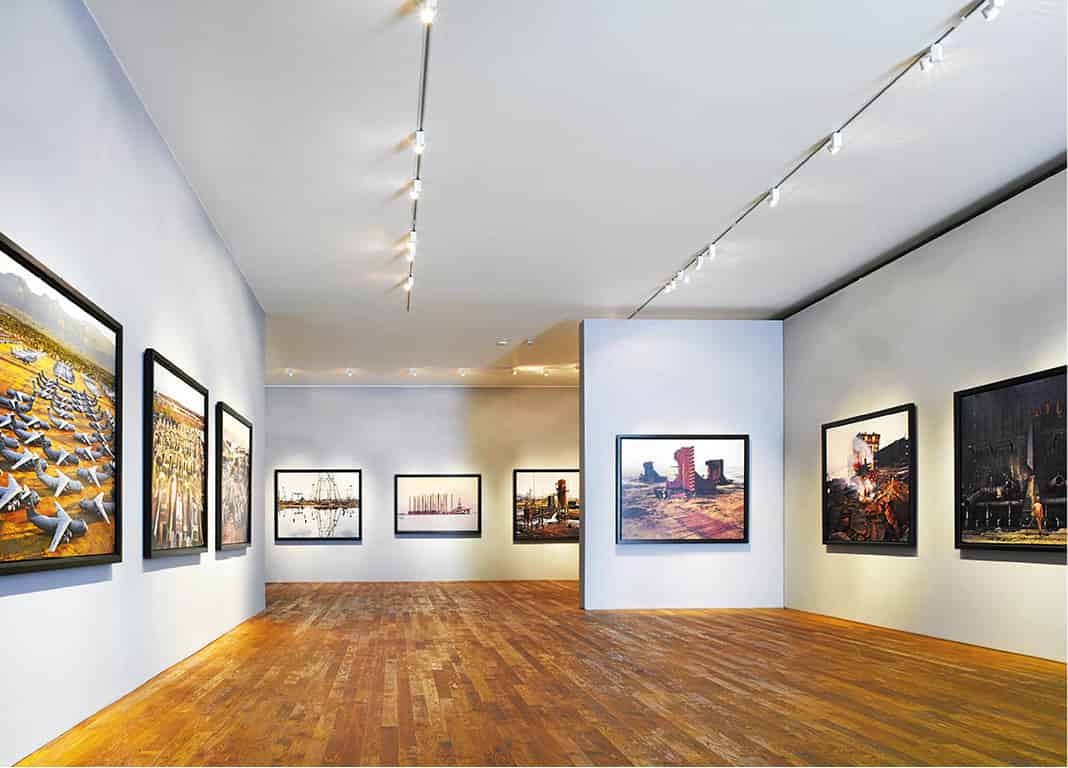
Getty Images
This is the largest public gallery in London (and the first in the world) dedicated to photography. It moved to its current location in 2012 (previously it was split over two adjacent venues in Great Newport Street). The Photographers’ Gallery doesn’t merely show emerging young photography talent, it fosters and encourages it with sponsorships, educational programmes and prizes, including the prestigious Deutsche Börse prize. Since its foundation in 1971, the Gallery has played an important role in establishing photography as a serious art form in the UK. To look at any one of their exhibitions is to become somewhat involved in the photographers’ world – to see things their way a little bit.
The gallery has a reputation for exhibiting and selling the best of international photography of all genres – news, fashion, portraiture, art and the more experimental – in the past it’s exhibited Capa, Salgado and Brandt, among others. And they have regular talks, screenings that either expand on current exhibitions or explore their archives, plus networking events. There’s a first-floor café, and an excellent bookshop with an extensive range of prints and photography books including many rare or limited-edition ones. It also sells some secondhand photography equipment. The staff are informed and helpful, and the customers are a cool crowd who seem as much interested in hooking up with each other as they do in making purchases.
Photographers’ Gallery, 16–18 Ramillies St; tel: 020 7087 9300; www.photonet.org.uk; [map] B5